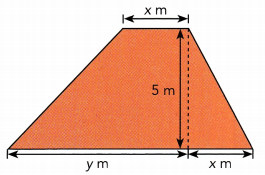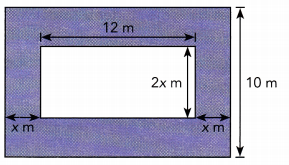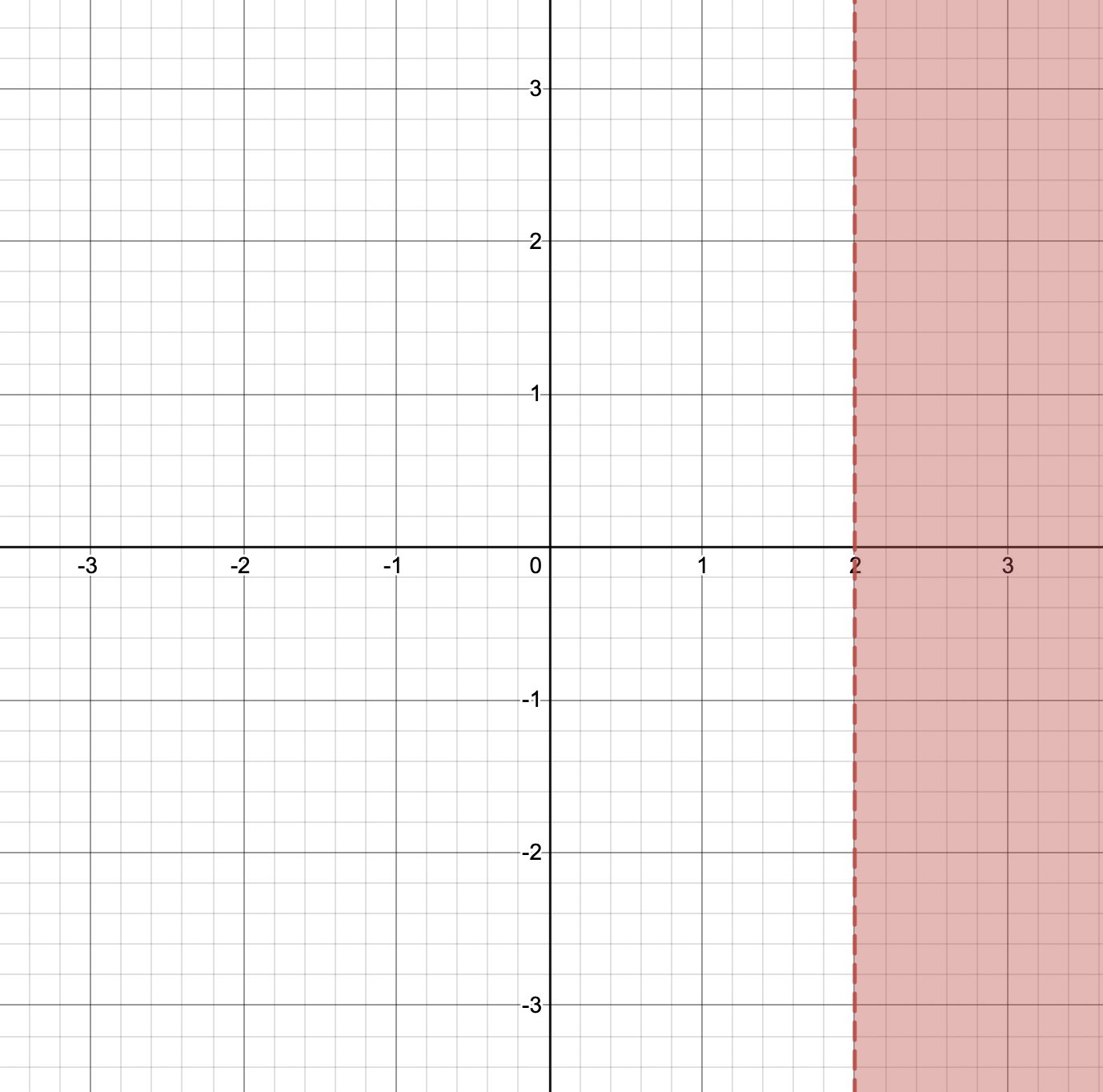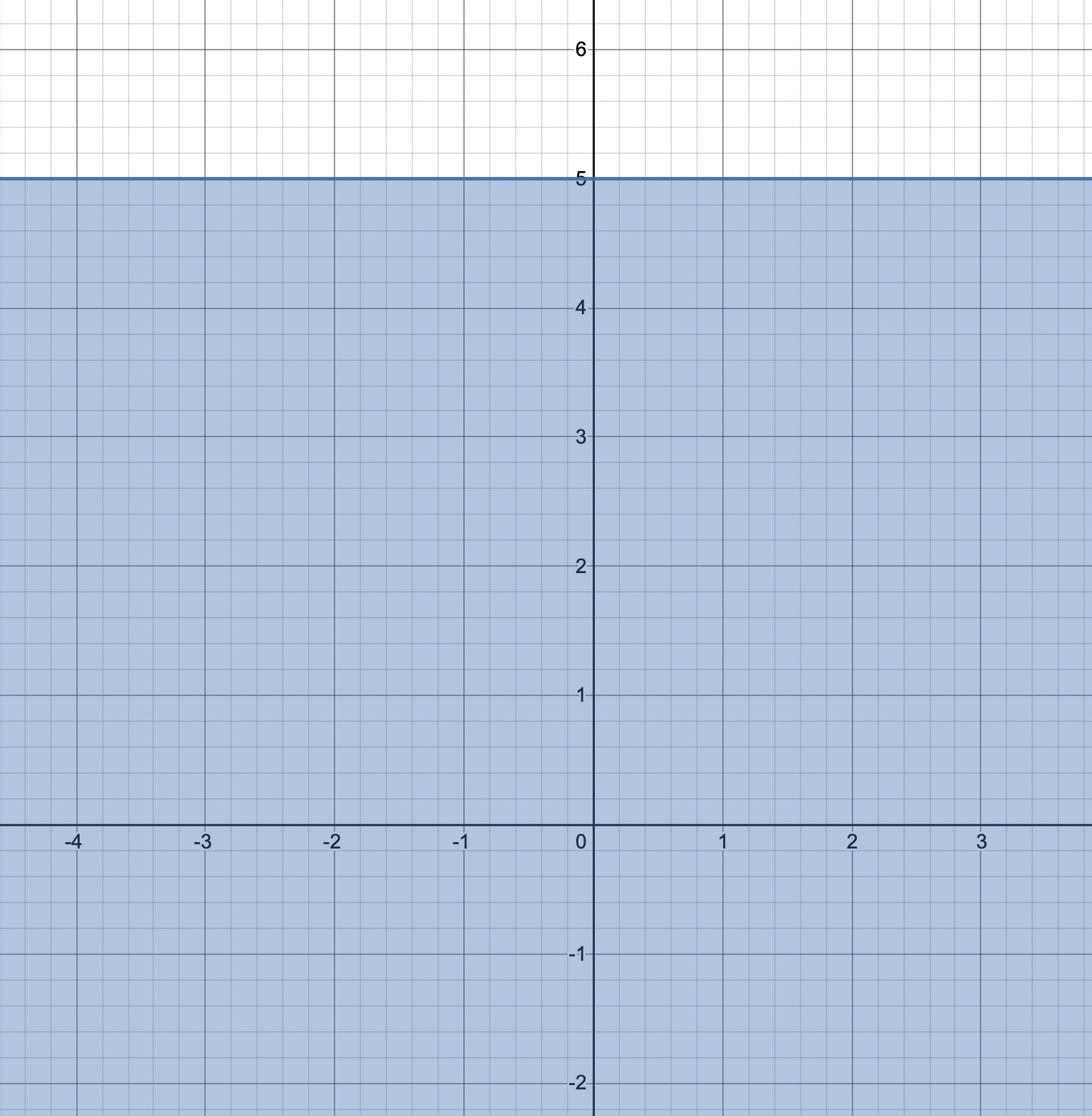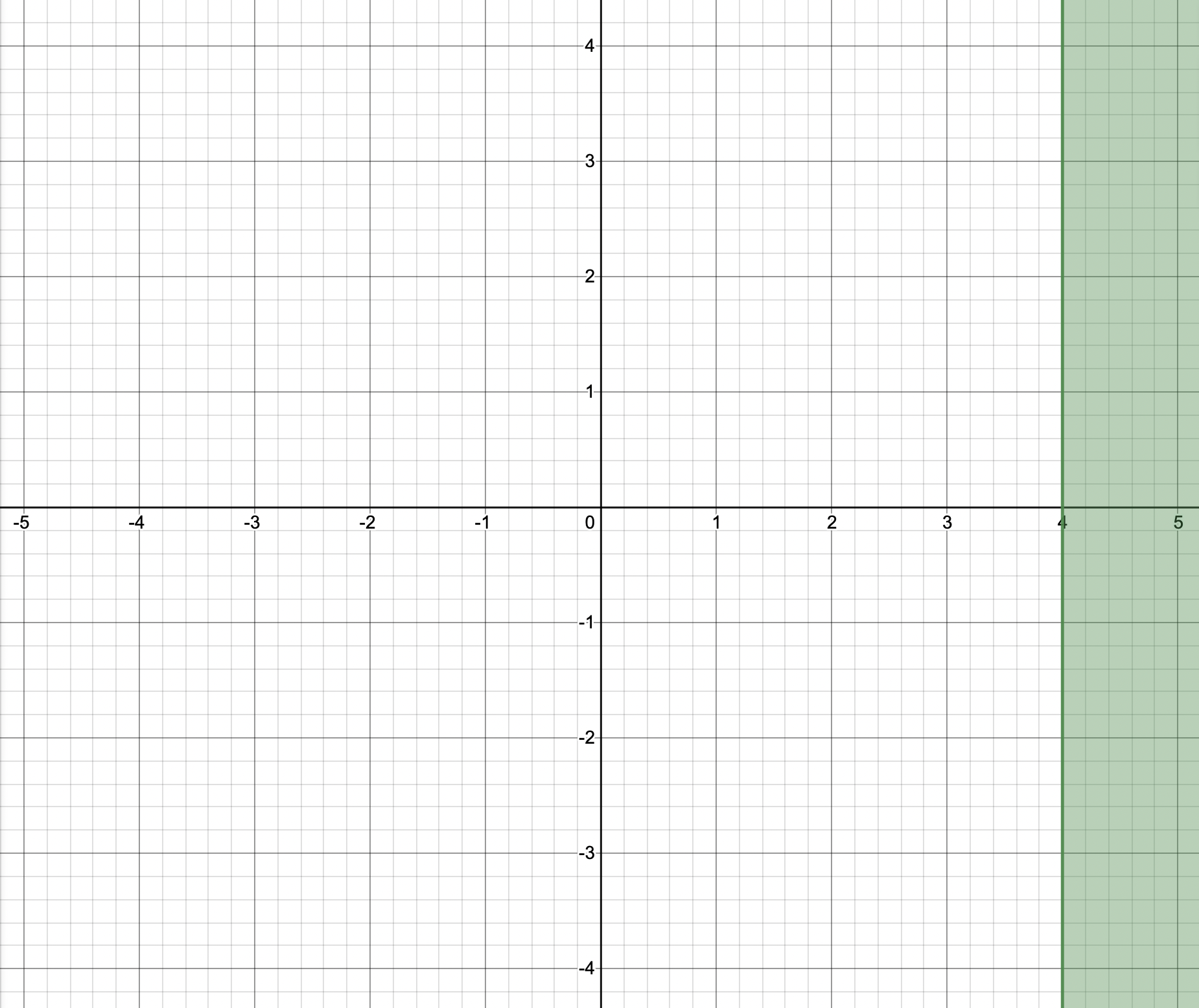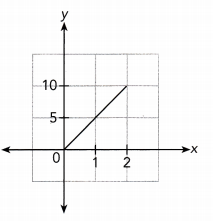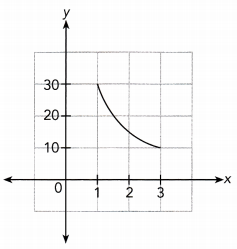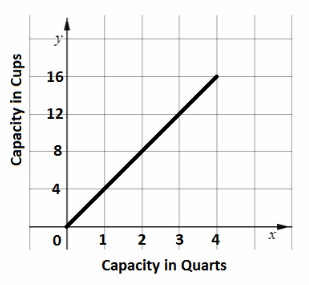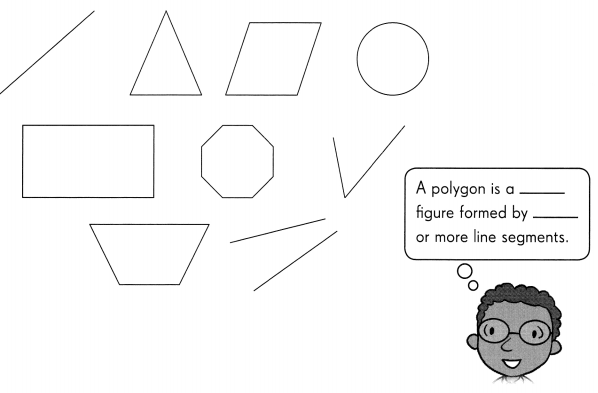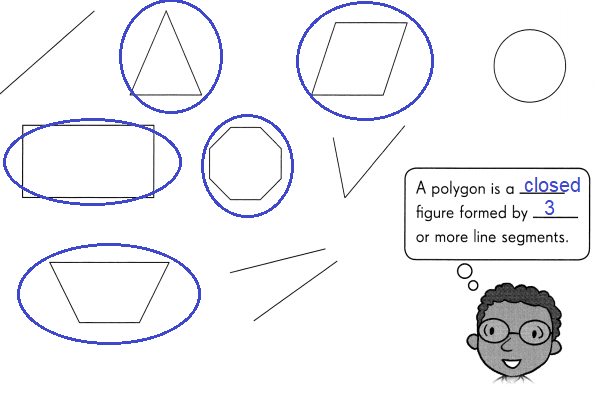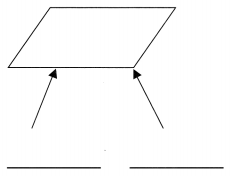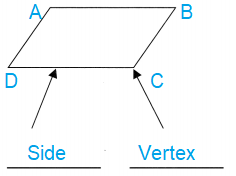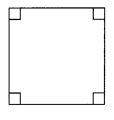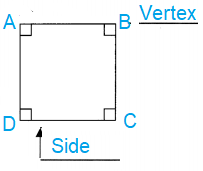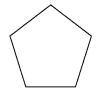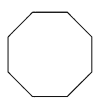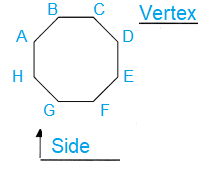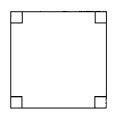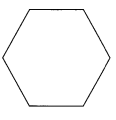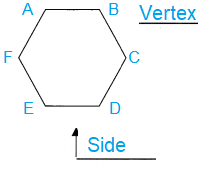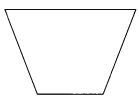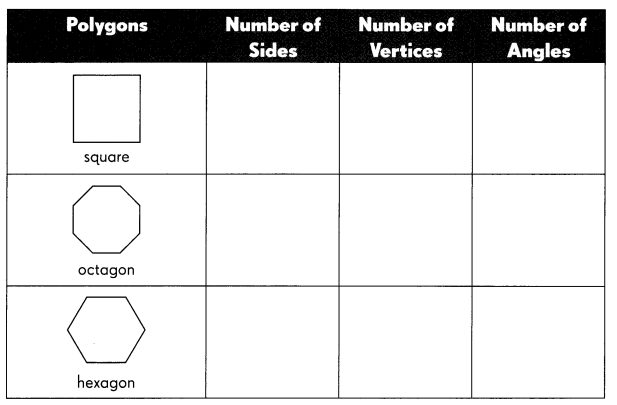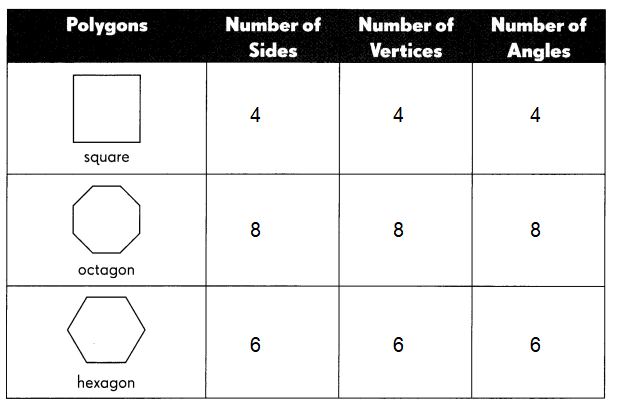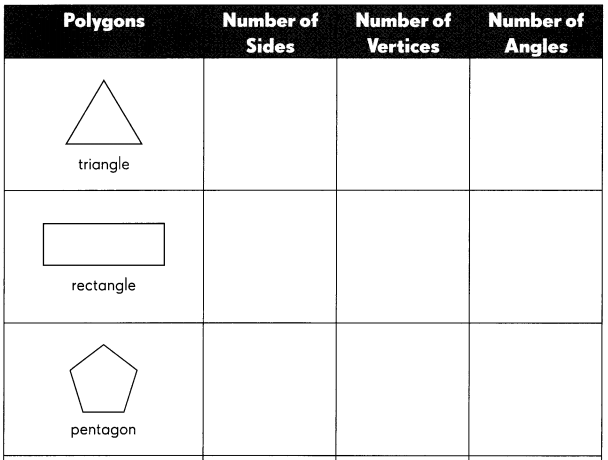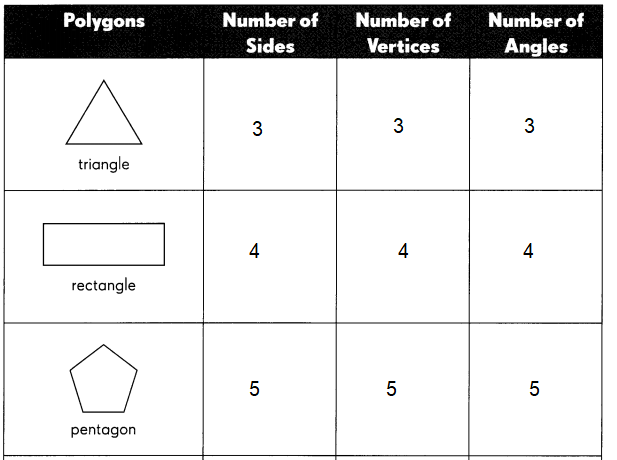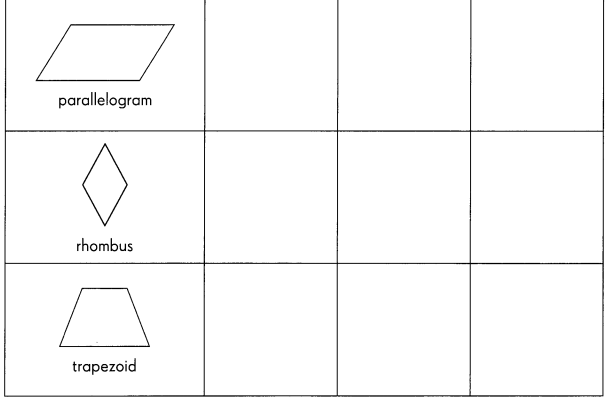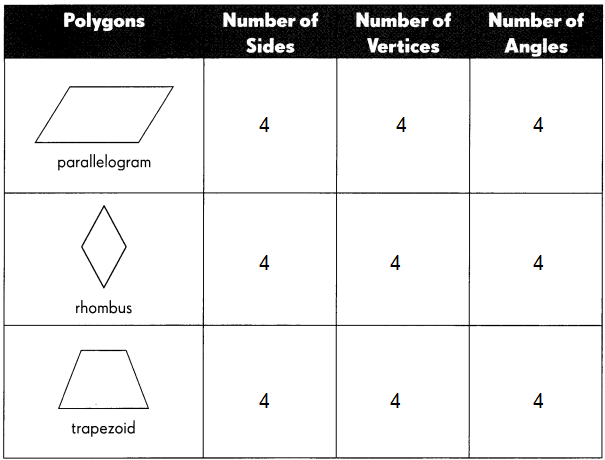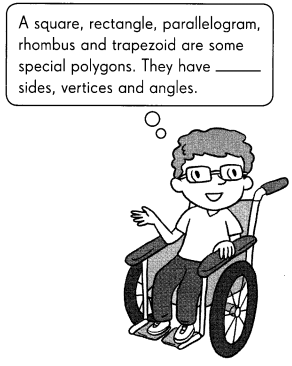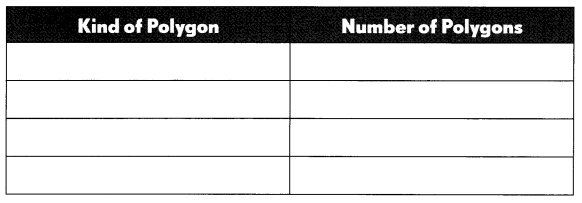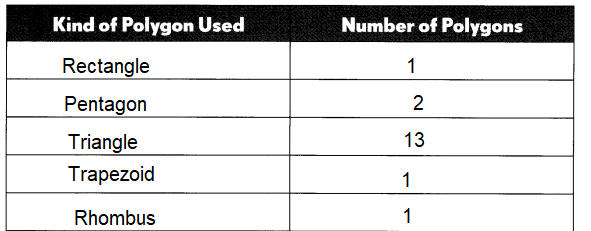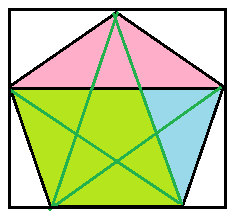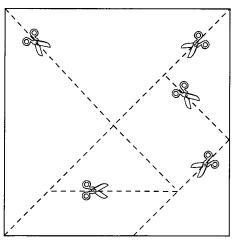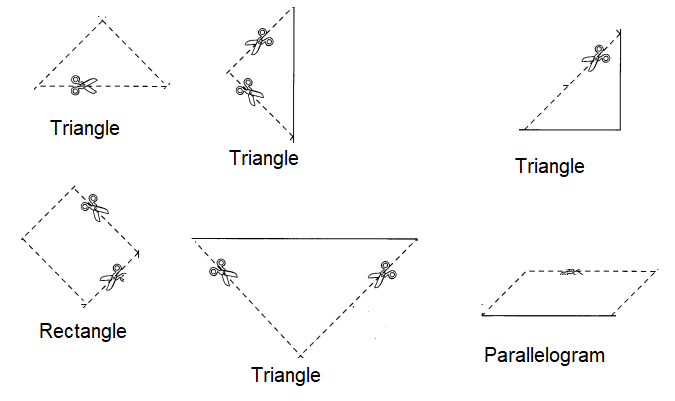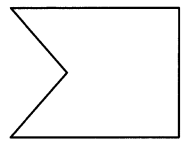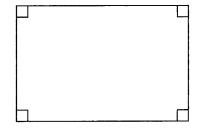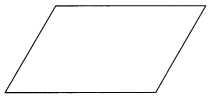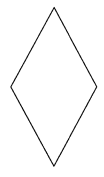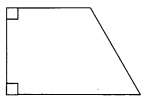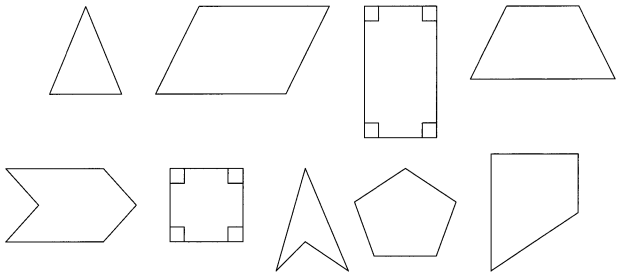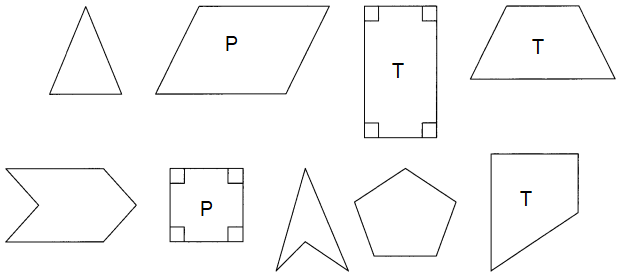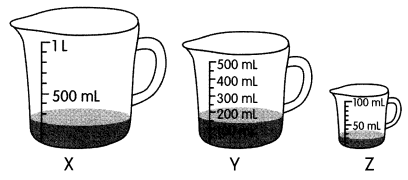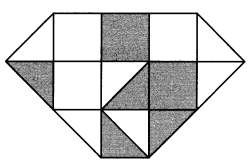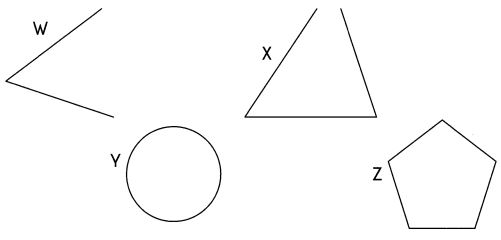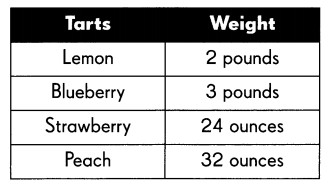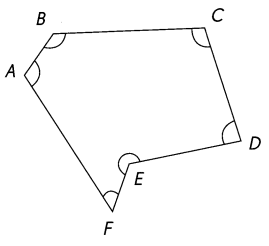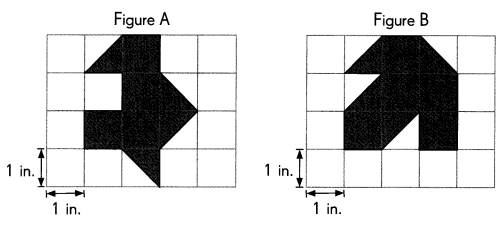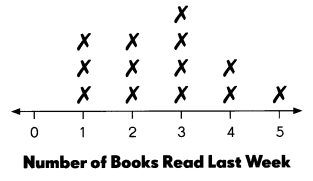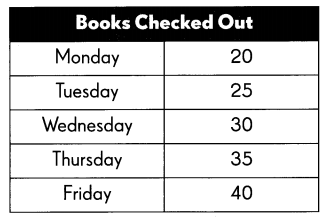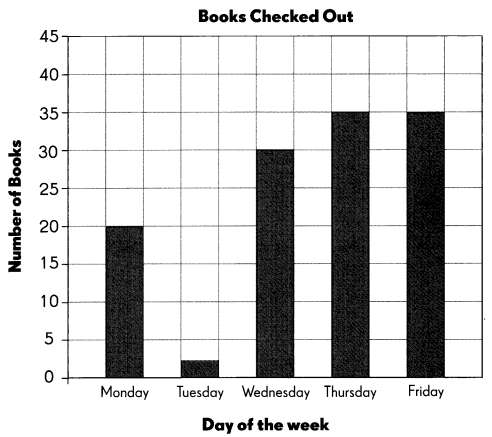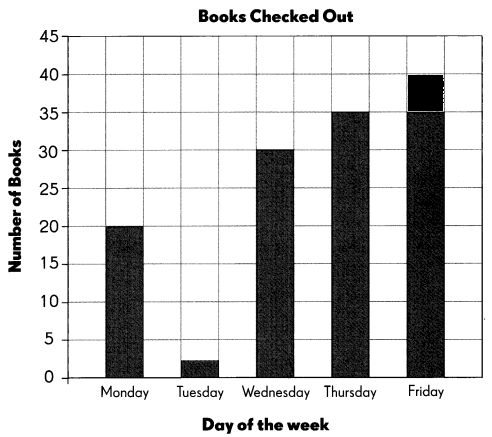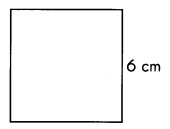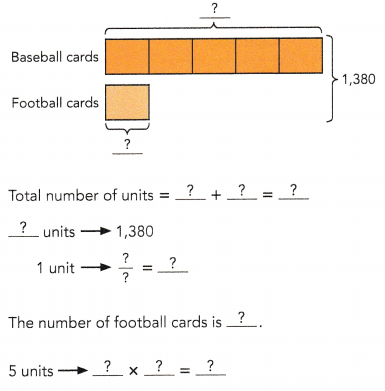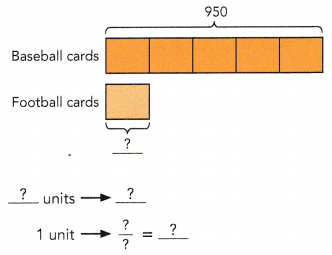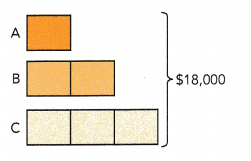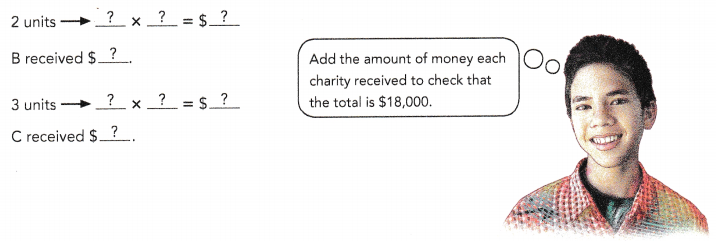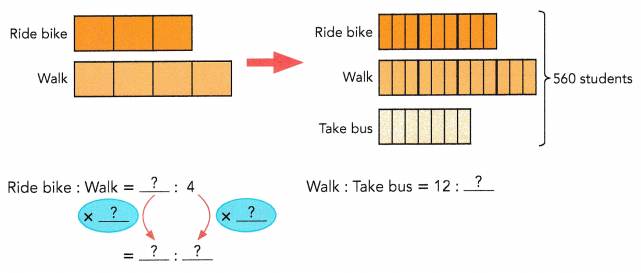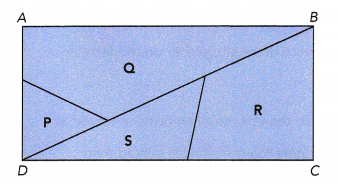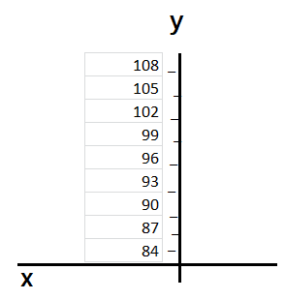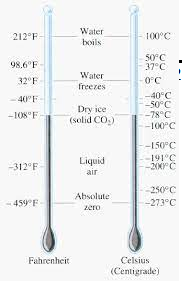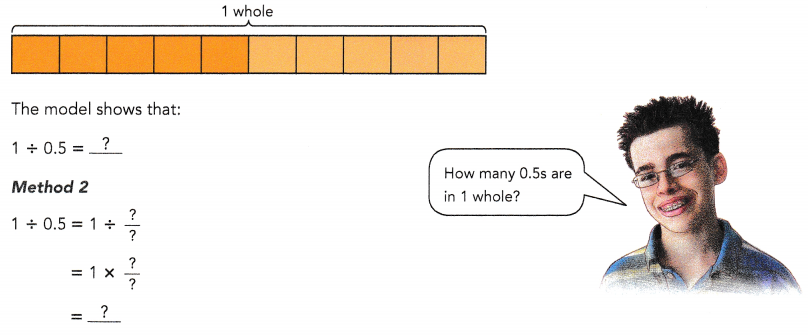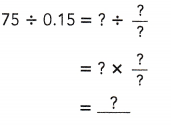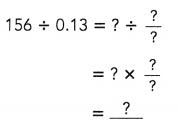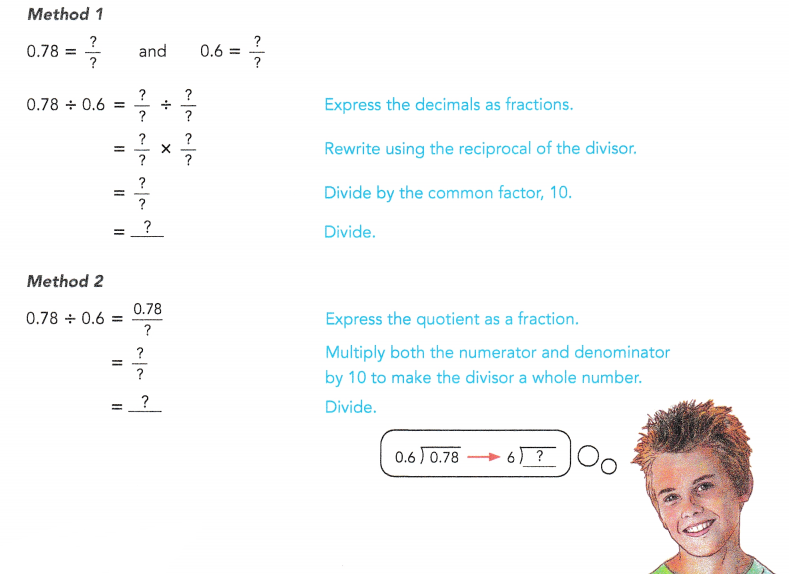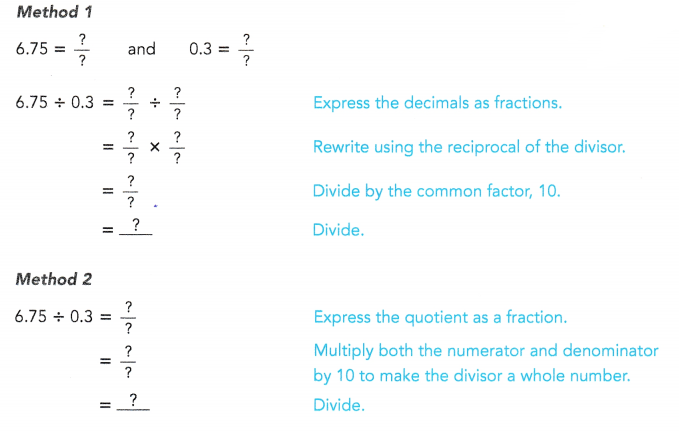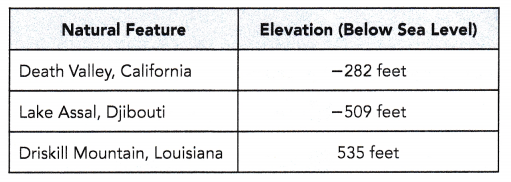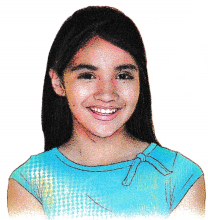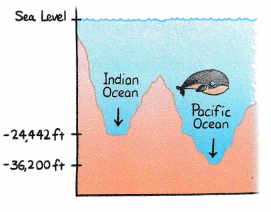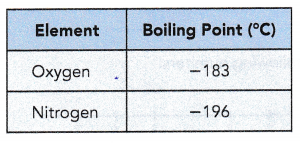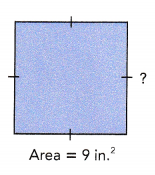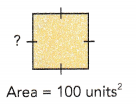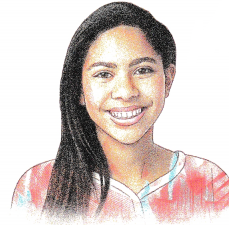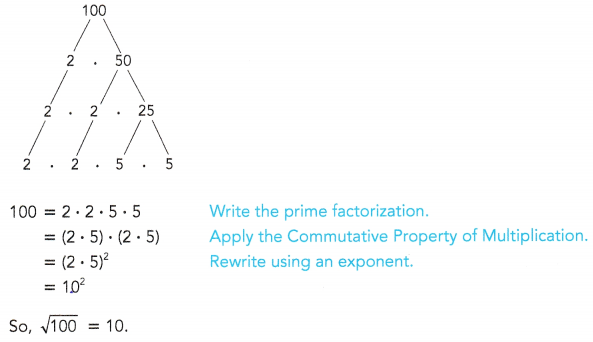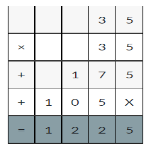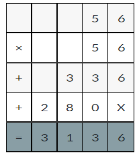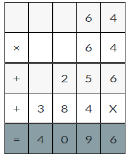Practice the problems of Math in Focus Grade 6 Workbook Answer Key Chapter 6 Lesson 6.2 Fractions, Decimals, and Percents to score better marks in the exam.
Math in Focus Grade 6 Course 1 A Chapter 6 Lesson 6.2 Answer Key Fractions, Decimals, and Percents
Hands-On Activity
EXPRESSING FRACTIONS OR MIXED NUMBERS AS PERCENTS
Work in pairs.
Use these fractions and mixed numbers.

STEP 1: Find which of the fractions or mixed numbers can be expressed as percents using the method of writing an equivalent fraction. List the fractions that cannot be expressed as percents using this method.
Example
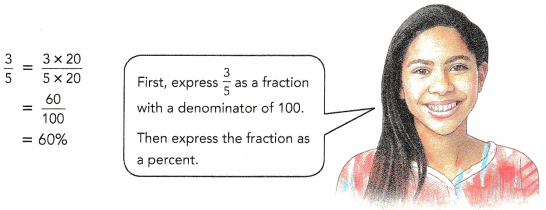
Answer:
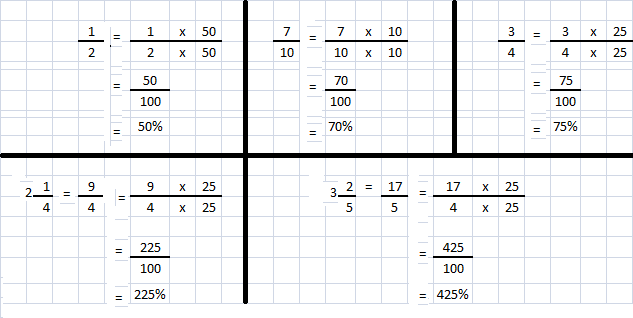
STEP 2: If you want to use the method of writing an equivalent fraction to express a fraction as a percent, what must be true of the fraction or mixed number?
Explanation:
The denominator must me 100 in the fraction,
then the fraction in the numerator is expressed as percentage.
fractions with denominator with 9, 8 , 6, 3 can not be expressed as 100 in the denominator.
Math Journal Explain how you would express 1\(\frac{3}{4}\) as a percent.
Answer:
175%
Explanation:
Express 1\(\frac{3}{4}\) as a percent.
\(\frac{7}{4}\)
To express the fraction with denominator 100,
multiply both the numerator and denominator with 25
= \(\frac{175}{100}\)
= 175%
Math in Focus Grade 6 Chapter 6 Lesson 6.2 Guided Practice Answer Key
Express each fraction or mixed number as a percent.
Question 1.
\(\frac{4}{7}\) = \(\frac{4}{7}\) × ![]() %
%
= \(\frac{?}{?}\) %
= ![]() %
%
Answer:
57%
Explanation:
\(\frac{4}{7}\) = \(\frac{4}{7}\) × 100%
= \(\frac{400}{7}\) %
= 57%
Question 2.
1\(\frac{5}{9}\) = 1\(\frac{5}{9}\) × ![]() %
%
= \(\frac{?}{9}\) × ![]() %
%
= ![]() %
%
Answer:
155%
Explanation:
1\(\frac{5}{9}\) =1 \(\frac{5}{9}\) × 100%
= \(\frac{14}{9}\) x 100%
= 155%
Question 3.
\(\frac{5}{6}\)
Answer:
83%
Explanation:
\(\frac{5}{6}\) = \(\frac{5}{6}\) × 100%
= \(\frac{500}{6}\) %
= 83%
Question 4.
1\(\frac{7}{8}\)
Answer:
187.5%
Explanation:
1\(\frac{7}{8}\) = 1\(\frac{7}{8}\) × 100%
= \(\frac{15}{8}\) x 100 %
= 187.5%
Complete.
Question 5.
Express 0.82 as a percent.
Method 1
0.82 = \(\frac{?}{100}\)
= ![]()
Method 2
0.82 = \(\frac{?}{9}\) × 100 %
= ![]()
Answer:
82%
Explanation:
Express 0.82 as a percent.
Method 1
Converting from a decimal to a percentage is done by multiplying the decimal value by 100 and adding %.
0.82 = \(\frac{82}{100}\)
= 0.82
Express each decimal as a percent.
Question 6.
0.04
Answer:
4%
Explanation:
Express 0.04 as a percent.
Method 1
Converting from a decimal to a percentage is done by multiplying the decimal value by 100 and adding %.
0.04 = \(\frac{4}{100}\)
= 0.04
Question 7.
0.98
Answer:
98%
Explanation:
Express 0.98 as a percent.
Method 1
Converting from a decimal to a percentage is done by multiplying the decimal value by 100 and adding %.
0.98 = \(\frac{98}{100}\)
= 0.98
Question 8.
0.6
Answer:
60%
Explanation:
Express 0.6 as a percent.
Method 1
Converting from a decimal to a percentage is done by multiplying the decimal value by 100 and adding %.
0.6 = \(\frac{60}{100}\)
= 0.6
Express each percent as a fraction in simplest form.
Question 9.
83\(\frac{1}{3}\) %
Answer:
8333.33
Explanation:
83 \(\frac{1}{3}\)%
= \(\frac{250}{3}\) x 100
= 8333.33
Question 10.
84.4%
Answer:
\(\frac{211}{250}\)
Explanation:
84.4% = \(\frac{84.4}{100}\)
multiply the numerator and denominator with 10,
as numerator has decimal
= \(\frac{844}{1000}\)
Divided numerator and denominator with 2 to simplify
= \(\frac{211}{250}\)
Math in Focus Course 1A Practice 6.2 Answer Key
Express each fraction or mixed number as a percent.
Question 1.
\(\frac{3}{5}\)
Answer:
60%
Explanation:
Simplify the given fraction
\(\frac{3}{5}\) = 0.6
Converting from a decimal to a percentage is done by multiplying the decimal value by 100 and adding %.
0.6 x 100 = 60%
Question 2.
\(\frac{3}{8}\)
Answer:
37.5%
Explanation:
Simplify the given fraction
\(\frac{3}{8}\) = 0.375
Converting from a decimal to a percentage is done by multiplying the decimal value by 100 and adding %.
0.375 x 100 = 37.5%
Question 3.
\(\frac{1}{3}\)
Answer:
33%
Explanation:
Simplify the given fraction
\(\frac{1}{3}\) = 0.33
Converting from a decimal to a percentage is done by multiplying the decimal value by 100 and adding %.
0.33 x 100 = 33%
Question 4.
2\(\frac{1}{5}\)
Answer:
220%
Explanation:
Simplify the given fraction
2\(\frac{1}{5}\)
= \(\frac{11}{5}\) = 2.2
Converting from a decimal to a percentage is done by multiplying the decimal value by 100 and adding %.
2.2 x 100 = 220%
Question 5.
7\(\frac{3}{4}\)
Answer:
442%
Explanation:
Simplify the given fraction
7\(\frac{3}{4}\)
\(\frac{31}{7}\) = 4.42
Converting from a decimal to a percentage is done by multiplying the decimal value by 100 and adding %.
4.42 x 100 = 442%
Question 6.
9\(\frac{7}{8}\)
Answer:
987%
Explanation:
Simplify the given fraction
9\(\frac{7}{8}\)
\(\frac{79}{8}\) = 9.87
Converting from a decimal to a percentage is done by multiplying the decimal value by 100 and adding %.
9.87 x 100 = 987%
Express each decimal as a percent.
Question 7.
0.46
Answer:
46%
Explanation:
Converting from a decimal to a percentage is done by multiplying the decimal value by 100 and adding %.
0.46 x 100 = 46%
Question 8.
0.7
Answer:
70%
Explanation:
Converting from a decimal to a percentage is done by multiplying the decimal value by 100 and adding %.
0.7 x 100 = 70%
Question 9.
0.06
Answer:
6%
Explanation:
Converting from a decimal to a percentage is done by multiplying the decimal value by 100 and adding %.
0.06 x 100 = 6%
Question 10.
1.52
Answer:
152%
Explanation:
Converting from a decimal to a percentage is done by multiplying the decimal value by 100 and adding %.
1.52 x 100 = 152%
Question 11.
6.03
Answer:
603%
Explanation:
Converting from a decimal to a percentage is done by multiplying the decimal value by 100 and adding %.
6.03 x 100 = 603%
Question 12.
8.9
Answer:
890%
Explanation:
Converting from a decimal to a percentage is done by multiplying the decimal value by 100 and adding %.
8.9 x 100 = 890%
Express each percent as a fraction in simplest form.
Question 13.
5.75%
Answer:
\(\frac{23}{400}\)
Explanation:
5.75% can be written as \(\frac{5.75}{100}\)
To convert percent as a fraction in simplest form,
multiply with 100 on both numerator and denominator.
\(\frac{5.75}{100}\) X \(\frac{100}{100}\)
= \(\frac{575}{10000}\)
Simplify the fraction divided with the greatest common factor 5 on both sides.
= \(\frac{23}{400}\)
Question 14.
25.5%
Answer:
\(\frac{51}{200}\)
Explanation:
25.5% can be written as \(\frac{25.5}{100}\)
To convert percent as a fraction in simplest form,
multiply with 10 on both numerator and denominator.
\(\frac{25.5}{100}\) X \(\frac{100}{100}\)
= \(\frac{255}{1000}\)
Simplify the fraction divided with the greatest common factor 5 on both sides.
= \(\frac{51}{200}\)
Question 15.
85.25%
Answer:
\(\frac{341}{400}\)
Explanation:
85.25% can be written as \(\frac{85.25}{100}\)
To convert percent as a fraction in simplest form,
multiply with 100 on both numerator and denominator.
\(\frac{85.25}{100}\) X \(\frac{100}{100}\)
= \(\frac{8525}{10000}\)
Simplify the fraction divided with the greatest common factor 5 on both sides.
= \(\frac{341}{400}\)
Question 16.
16\(\frac{2}{3}\) %
Answer:
\(\frac{1}{6}\)
Explanation:
16\(\frac{2}{3}\) %
= \(\frac{50}{3}\) %
= \(\frac{50}{3}\) X \(\frac{100}{100}\)
= \(\frac{1}{6}\)
Question 17.
42\(\frac{3}{8}\)%
Answer:
\(\frac{339}{800}\)
Explanation:
42\(\frac{3}{8}\) %
= \(\frac{339}{8}\) %
= \(\frac{339}{8}\) X \(\frac{100}{100}\)
= \(\frac{339}{800}\)
Question 18.
79\(\frac{5}{6}\) %
Answer:
\(\frac{479}{600}\)
Explanation:
79\(\frac{5}{6}\) %
= \(\frac{479}{6}\) %
= \(\frac{479}{6}\) X \(\frac{100}{100}\)
= \(\frac{479}{600}\)
Express each fraction as a percent. Round your answer to the nearest whole number.
Question 19.
\(\frac{76}{125}\)
Answer:
61%
Explanation:
\(\frac{76}{125}\) = 0.608
Round 0.608 to the nearest whole number = 61
So, percentage of fraction = 61%
Question 20.
\(\frac{98}{230}\)
Answer:
43%
Explanation:
\(\frac{98}{230}\) = 0.426
Round 0.426 to the nearest whole number = 43
So, percentage of fraction = 43%
Question 21.
\(\frac{102}{350}\)
Answer:
29%
Explanation:
\(\frac{102}{350}\) = 0.291
Round 0.291 to the nearest whole number = 29
So, percentage of fraction = 29%
Find the missing fractions and decimals.
Question 22.

Answer:

Explanation:
The below fractions are missing fractions.
a)12\(\frac{1}{2}\) %
= \(\frac{25}{2}\) %
= \(\frac{25}{2}\) X 100
= \(\frac{25}{200}\)
= \(\frac{1}{8}\)
b) 25%
= \(\frac{25}{100}\) %
= \(\frac{25}{100}\)
= \(\frac{1}{4}\)
c) 37\(\frac{1}{2}\) %
= \(\frac{75}{2}\) %
= \(\frac{75}{2}\) X \(\frac{100}{100}\)
= \(\frac{75}{200}\)
= \(\frac{3}{8}\)
d) 50%
= \(\frac{50}{100}\)
= \(\frac{1}{2}\)
e) 62\(\frac{1}{2}\) %
= \(\frac{125}{2}\) %
= \(\frac{125}{2}\) X \(\frac{100}{1}\)
= \(\frac{125}{200}\)
= \(\frac{5}{8}\)
f) 75%
= \(\frac{75}{100}\)
= \(\frac{3}{4}\)
g) 87\(\frac{1}{2}\) %
= \(\frac{175}{2}\) %
= \(\frac{175}{2}\) X \(\frac{100}{1}\)
= \(\frac{175}{200}\)
= \(\frac{7}{8}\)
Below are the missing decimals.
a) 25%
\(\frac{25}{100}\) = 0.25
b) \(\frac{3}{8}\) = 0.375
c) \(\frac{5}{8}\) = 0.625
d) \(\frac{3}{4}\) = 0.75
e) \(\frac{7}{8}\) = 0.87
Solve. Show your work.
Question 23.
Math Journal School A has 450 seniors, and 432 of them plan to go to college. School B has 380 seniors, and 361 of them plan to go to college. In which school does a greater percent of students plan to go to college? Justify your reasoning.
Answer:
In School A
Explanation:
School A has 450 seniors, and 432 of them plan to go to college.
A = \(\frac{432}{450}\)
percentage of the students = \(\frac{432}{450}\) X 100 = 96%
School B has 380 seniors, and 361 of them plan to go to college.
B = \(\frac{361}{380}\)
percentage of the students = \(\frac{361}{380}\) = 95%
So, greater percent of students plan to go to college are School A.
